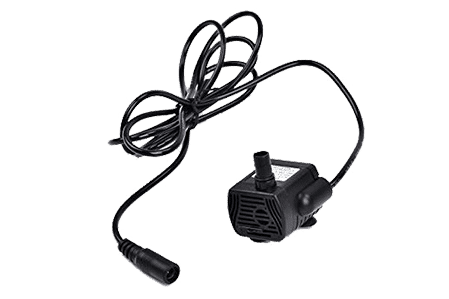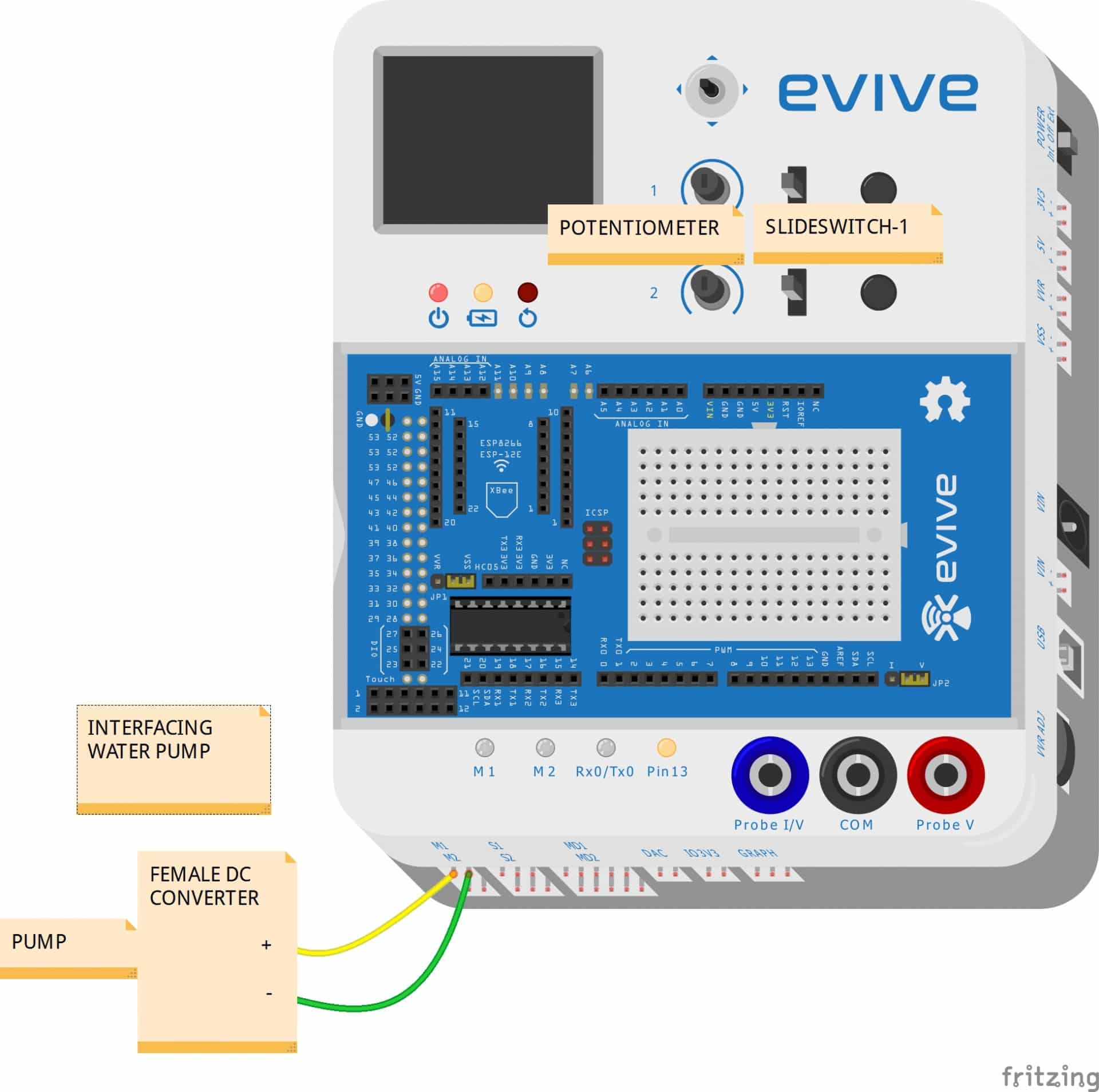Introduction
A water pump is a device that moves fluids through mechanical action. Water pump consumes electrical energy to perform mechanical by moving the fluid.
When we start the water pump the fans inside the pump rotates to create a pressure difference across the pump, due to which water starts flowing through it. However, all the pumps are designed to work in only one direction, which makes them unidirectional.
Connecting water pump with evive
Follow the steps below to connect the water pump to evive:
-
Take a 12v,3W water pump.
-
The end wire contains male connector which is connected to a female DC connector as shown in GIF.

- Connect two jumper wires to the female DC connector.

-
Connect the female end of jumper cables to evive motor M1 slot as shown in the figure.
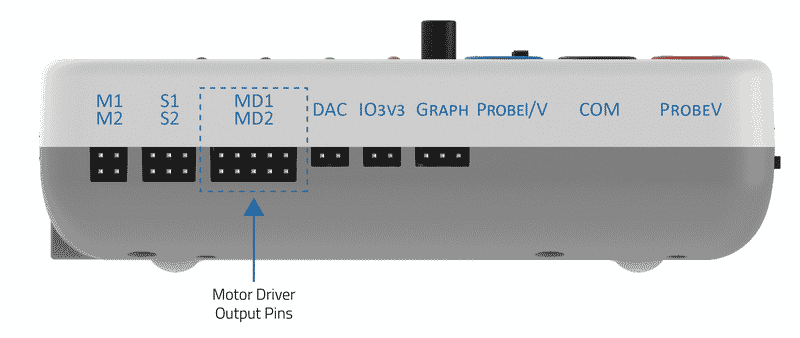
-
Dip the water pump in the water reservoir.
-
Power evive with 12V,2A power adapter.
Controlling the pump using the evive menu
In this example, we’re going to use 12V,3W water pump. The water flow of the pump is controlled using the evive menu.
- Switch ON your evive.
- Center press on the navigation key to open the evive menu.
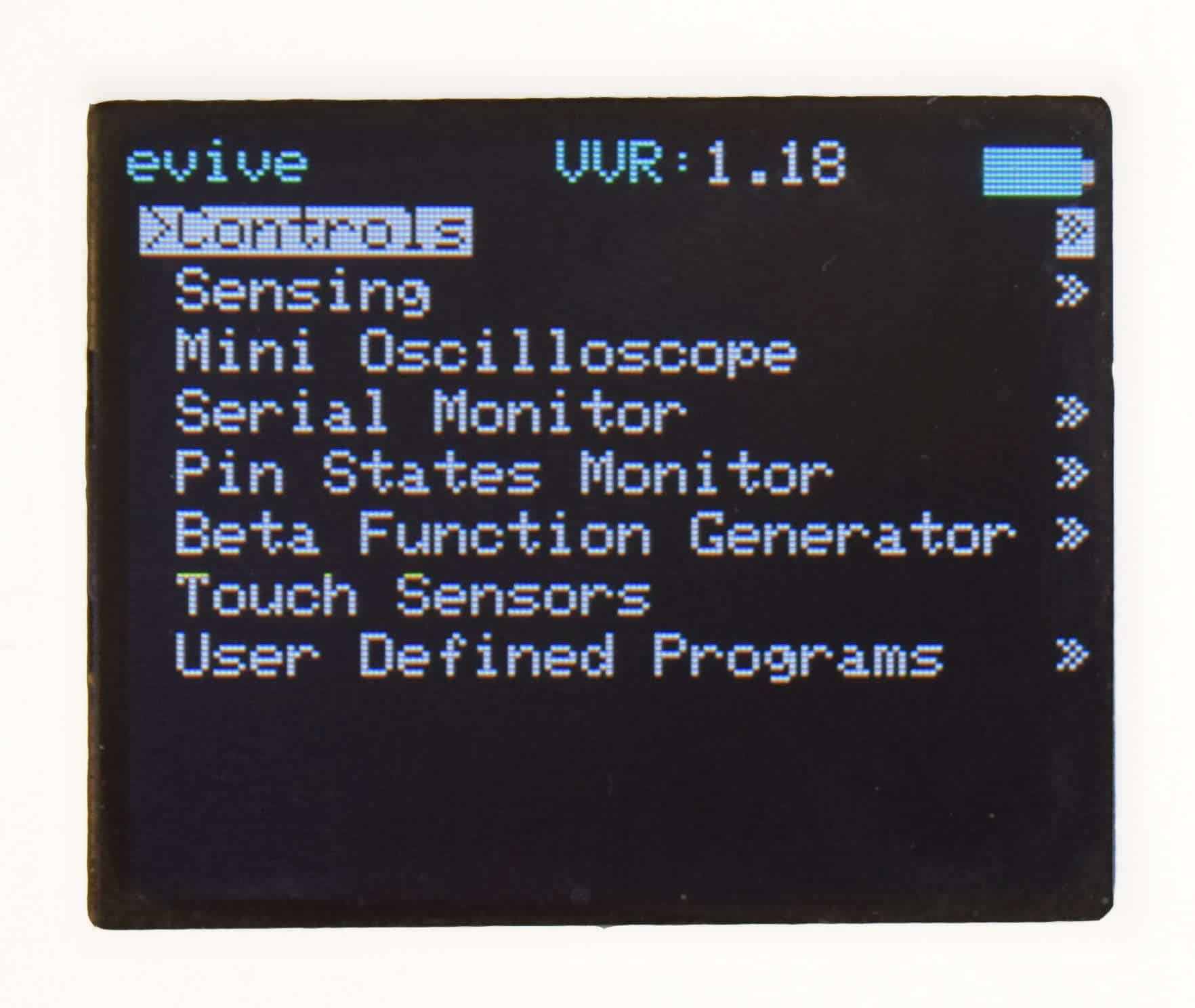
- Go into Controls>Motors>Motor 1. This will open an interface to control the pump.
- Make the slide switch up and set the PWM to 255. This will start the flow of water. If the water is not flowing, then swap the motor M1 connection to reverse the flow direction.
Controlling the water pump using PictoBlox
In this example, we will be controlling the water pump using the potentiometer.
- Open PictoBlox.
- Select the board as evive:
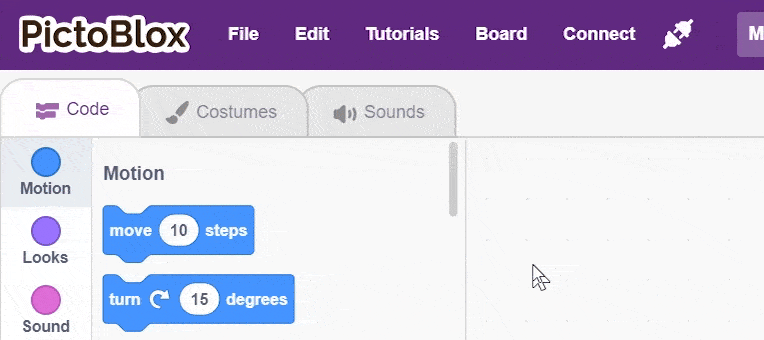
- Connect the evive.

- Make a variable to store the Speed value:

- Create the following script using when evive starts up block:

- Upload the code onto evive:

- Control the pump speed using potentiometer 1 of evive.
You can download the PictoBlox program from here: Controlling Water Pump with Potentiometer

Conclusion
In conclusion, we have learned how to connect a 12V,3W water pump to evive and control its speed using both the evive menu and PictoBlox. We have also seen the various steps and connections required to control the pump. With this, we have learned the basics of controlling a water pump with evive.


